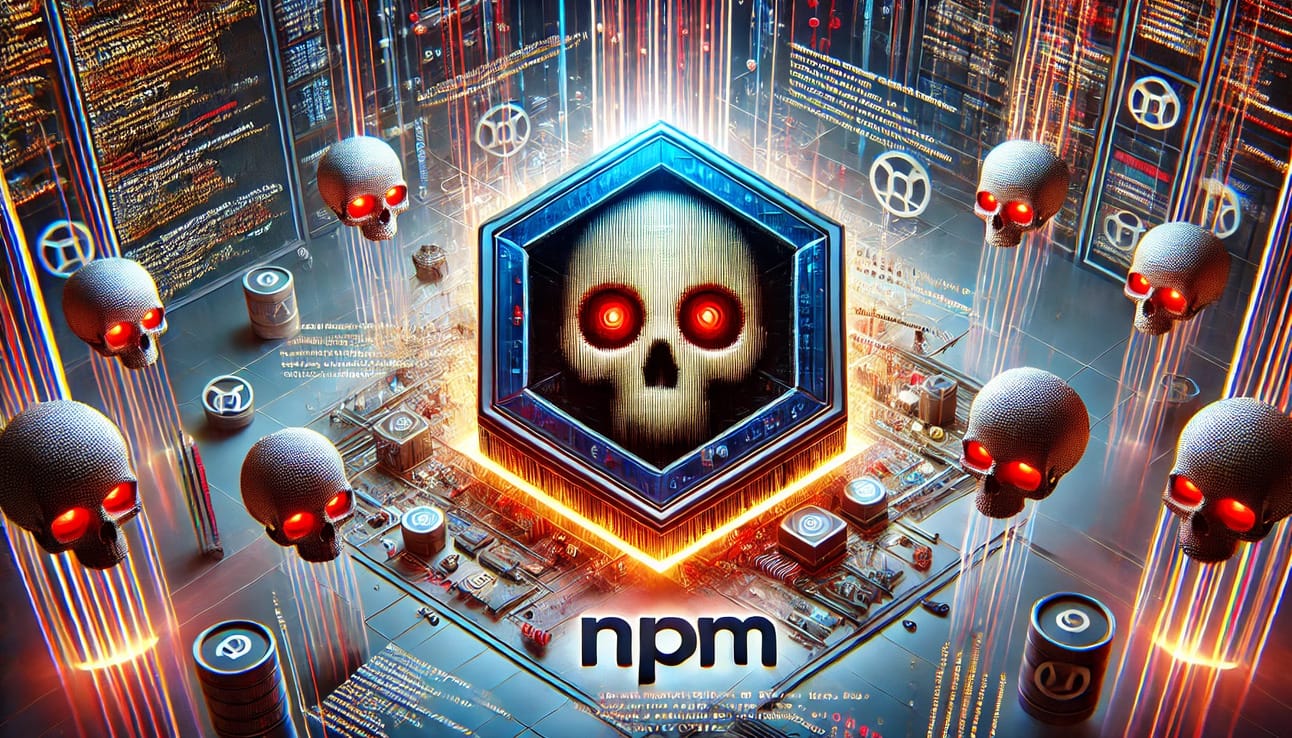
CYBER SYRUP
Delivering the sweetest insights on cybersecurity.
Cybersecurity Check: See How You Stack Up
Ever wonder how your cybersecurity measures stack up against your peers?
With Critical Start's Quick Start Risk Assessments, you're just 15 questions away from discovering how your organization’s security compares with industry standards.
It's a quick, free way to find your strengths and get actionable steps to improve your defenses, so you can set yourself apart as a cybersecurity leader.
Why wait? Take the assessment and up your security game in minutes!
Best for: Organizations with 500+ employees.
Malicious NPM Packages Found: Understanding The Risk And How To Protect Yourself

Cybersecurity researchers have discovered two malicious packages on the npm package registry, designed to execute backdoor commands from a remote server. These packages, img-aws-s3-object-multipart-copy and legacyaws-s3-object-multipart-copy, have been removed by the npm security team, but their brief presence highlights significant risks for developers and organizations.
Overview of the Malicious Packages
Details of the Discovery
The malicious packages were identified by Phylum, a software supply chain security firm. These packages were designed to impersonate a legitimate npm library called aws-s3-object-multipart-copy but included backdoor functionality hidden within image files.
How the Attack Works
Package Design: The malicious packages contained an altered version of the
index.jsfile, which executed a JavaScript file namedloadformat.jsduring installation.Image Files: The
loadformat.jsfile processed three images featuring corporate logos of Intel, Microsoft, and AMD. The image corresponding to Microsoft's logo was used to extract and execute the malicious content.Command-and-Control (C2) Functionality: The code registered the new client with a C2 server by sending the hostname and operating system details. It then executed attacker-issued commands every five seconds and exfiltrated the results back to the attacker.
Who Is at Risk?
Developers and Organizations Using npm
Developers and organizations that rely on npm packages for their projects are at significant risk. The malicious packages can:
Compromise development environments.
Introduce vulnerabilities into production systems.
Lead to unauthorized access and data breaches.
End Users
End users of applications built with compromised npm packages are indirectly affected. Malicious code can lead to:
Data theft.
System compromises.
Potential cascading effects if the compromised application is widely used.
The Impact of Malicious Packages on npm
Rise in Sophistication and Volume
Phylum noted a dramatic increase in the sophistication and volume of malicious packages published to open-source ecosystems like npm. These attacks are becoming more successful, making it imperative for developers and security organizations to stay vigilant.
Concealed Threats
The use of image files to hide malicious code represents a sophisticated method of concealing threats. This technique can evade detection by traditional security tools, underscoring the need for advanced security measures.
How to Protect Yourself
Regular Security Audits
Audit Dependencies: Regularly audit all dependencies in your projects. Use tools like
npm auditto identify and mitigate vulnerabilities in third-party packages.Verify Package Integrity: Ensure the integrity of packages by verifying checksums and using package signing features where available.
Implement Robust Security Practices
Use Reputable Sources: Only use packages from reputable sources. Cross-check the integrity and authenticity of the packages you integrate into your projects.
Employ Static Analysis Tools: Use static analysis tools to scan code for potential vulnerabilities and malicious content before deployment.
Enhance Monitoring and Response
Monitor Network Traffic: Implement network monitoring to detect unusual activities that may indicate a compromise.
Set Up Incident Response Plans: Develop and maintain incident response plans to quickly address and mitigate the impact of security breaches.
Stay Informed
Follow Security Advisories: Regularly follow security advisories from npm and other trusted sources. Stay updated on new vulnerabilities and recommended patches.
Educate Your Team: Conduct regular training sessions for your team to raise awareness about security best practices and the risks associated with using third-party packages.
What to Do If You Are Affected
Immediate Actions
Revoke Compromised Credentials: If you suspect that your environment has been compromised, revoke any potentially compromised credentials and tokens immediately.
Remove Malicious Packages: Identify and remove any malicious packages from your projects. Replace them with secure versions.
Assess the Impact
Conduct a Thorough Investigation: Investigate the extent of the compromise. Determine which systems and data may have been affected.
Notify Stakeholders: Inform relevant stakeholders, including customers and partners, about the breach and the steps being taken to address it.
Strengthen Future Security
Review and Improve Security Policies: Use the incident as a learning opportunity to review and enhance your security policies and practices.
Adopt Advanced Security Tools: Invest in advanced security tools that can detect and prevent sophisticated attacks, including those using concealed methods like image-based payloads.
Conclusion
The discovery of these malicious npm packages highlights the ongoing risks associated with open-source ecosystems. By understanding the threats, implementing robust security measures, and staying vigilant, developers and organizations can protect their projects and users from potential exploits. Regular audits, continuous monitoring, and proactive incident response are key to maintaining a secure development environment.
